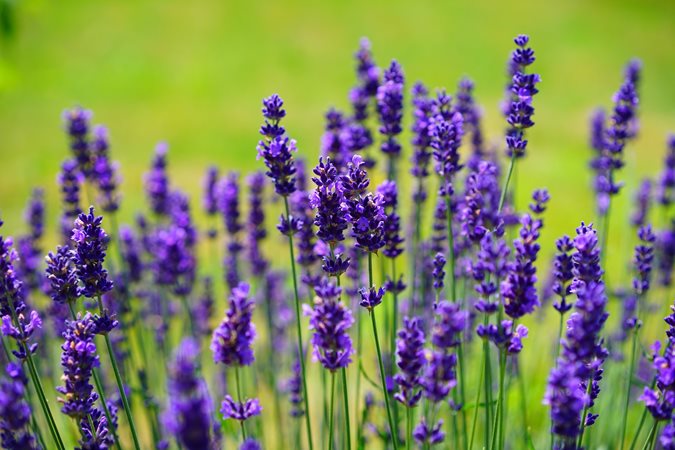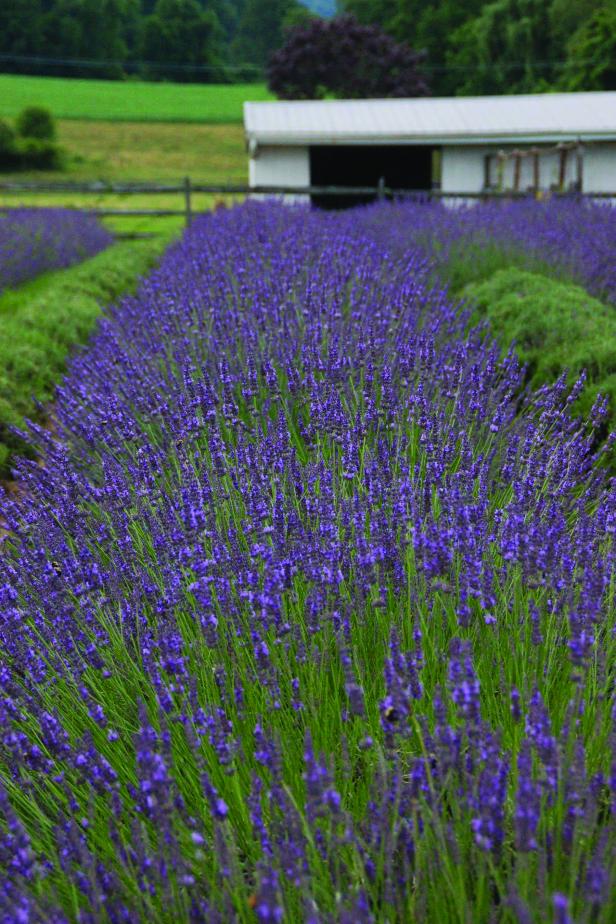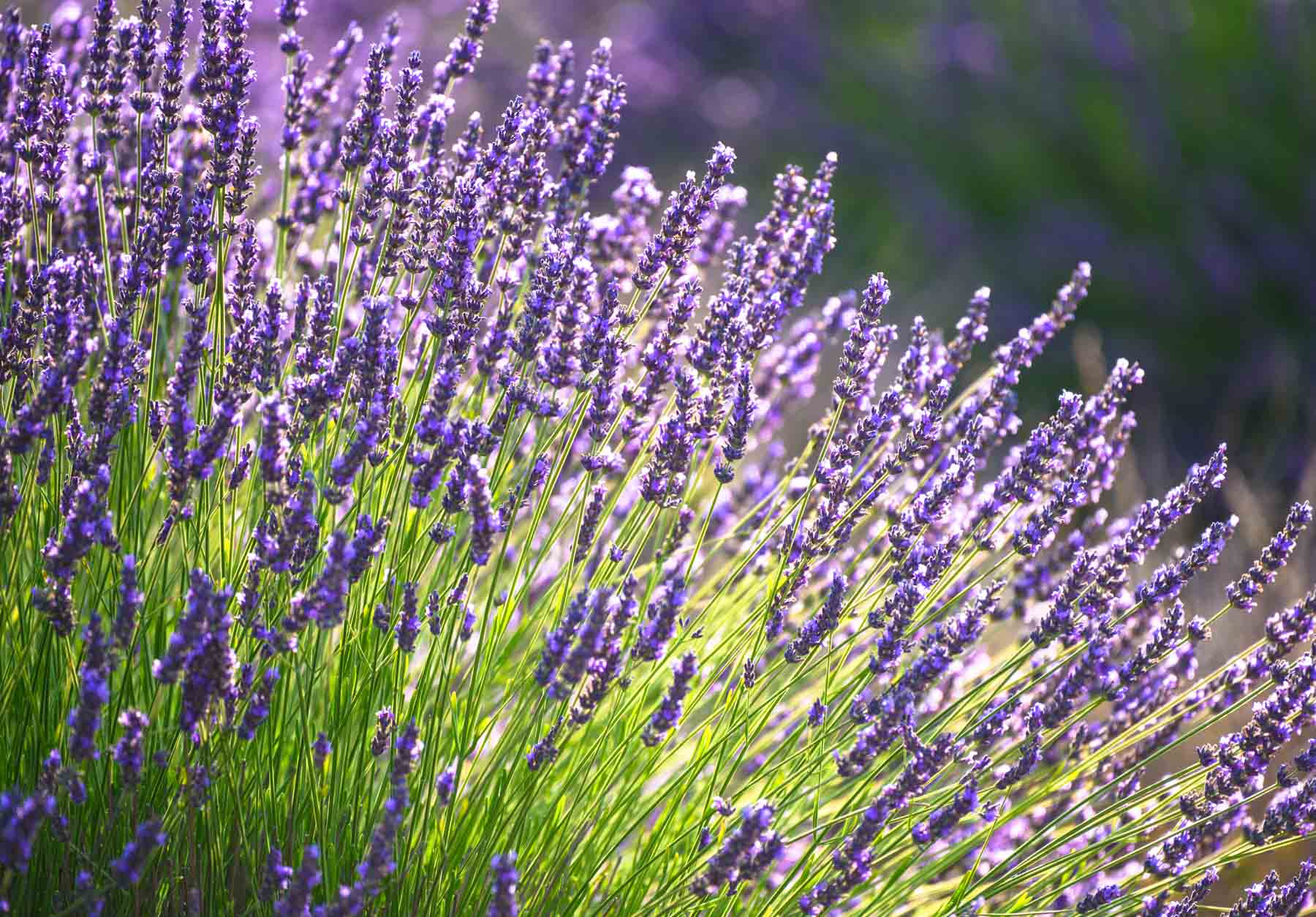
With proper maintenance and routine trimming, the perennial lavender plant known as “Provence” (Lavandula x intermedia) can live up to 15 years.
‘Provence’ is a cross between Portuguese lavender (Lavandula latifolia) and English lavender (Lavandula angustifolia) that benefits from both the prolonged flowering season and hardiness of both species.
In contrast to the less hardy Portuguese, French, and Spanish lavenders, which are regarded as annuals in some climates despite being perennials like all lavenders, “Provence” retains the cold hardy characteristics of English lavender and can withstand cold damaging Winter weather while still growing the following year.
If given the proper care, lavender “Provence” will bloom for up to 15 years and possibly longer each Winter.
Table of Contents
Ensure Perennial Lavender ‘Provence’ Grows back each Year

If pruned annually and given sufficient care, English lavenders and hybrids like “Provence” can withstand snow, ice, and severe winters.
The appropriate potting mixture must be used when planting lavender to ensure that it survives the winter.
All types of lavender dislike moist soil because it promotes the fungus that causes root rot at any time of year. Due to decreased levels of evaporation in the winter, soils remain moist for longer, which increases the prevalence of diseases that harm lavender.
If horticultural sand or grit has not been added to the soil profile, lavender ‘Provence’ will perish in damp, cold soils.
Make sure to add around 1/3 of the soil mixture as sand or grit and 2/3 with potting soil or compost when you are potting your lavender or preparing garden soil for planting.
Due to the high sand content, the soil will drain fast and won’t retain moisture for extended periods of time.
This will protect the roots of the lavender plant and keep them healthy and dry during the winter.
It can seem excessive to use 1/3 sand or grit, but keep in mind that lavenders are indigenous to the sandy soils of the Mediterranean coast, where they thrive in the dry climate. We as gardeners are simulating the conditions of the native environment of the lavender by adding sand to the soil mixture.
The aroma and number of blooms that lavender ‘Provence’ will produce will increase with the amount of dry, quickly draining soil, which is a terrific motivation to do so!
Read my article on the best soil combination for lavender plants in pots for additional details on how to prepare the soil.
Prune ‘Provence’ Every Year for Longevity

- Lavender can benefit from annual pruning to remove woody growth from the base of the plant and promote new growth that will produce more flowers.
- Lavender may be considerably extended in life and kept from getting lanky by pruning.
- Consistent flowering can be achieved by pruning the plant into a lovely mound form, which will also get the lavender ready for winter.
After flowering (‘Provence’ normally blooms from mid-summer to fall), prune lavender plants in the fall. To prepare the lavender for the upcoming winter, pruning should aim to produce a rounded shape.
A mounded shape can better withstand environmental effects (such snow and ice), which can cause the lavender’s rather brittle woody base to split.
Similar to how pollarding a tree lengthens its life, pruning lavender plants likewise extends their lifespan.
Lavender should only have its flexible top third pruned; the woody base should not be hard pruned.
Watch this YouTube video for an illustration of how to prune lavender plants:
Other Factors Influencing Lavender ‘Provence’ life span
In addition, the following things will help your perennial lavender “Provence” endure longer than a year:
- Whether it was grown in direct sunlight
- the right quantity of watering
- soil pH (lavender require a soil pH of between 6.5-8)
You must mimic the Mediterranean climate where lavender grows in order to get the most out of your lavender “Provence.”
If lavender is grown in full sun, it will produce more flowers and a stronger aroma. Less than six hours of sunlight every day causes lavender plants to grow spindly, produce fewer blooms, and frequently die young.
Instead of a closed-off portion of the garden, always grow lavender ‘Provence’ in full sun and an area that receives some airflow.
The lavender variety “Provence” doesn’t need much watering once it’s established, and in temperate climes, it probably gets all the moisture it needs from rainfall.
Since lavender grows well in dry coastal regions of Southern Europe, they can withstand dryness in virtually any environment.
Give the lavender a good soak, preferably in the morning, if there hasn’t been rain for longer than two weeks during the growing season (Spring through Fall). Don’t water lavender in the winter.
Your lavender ‘Provence’ only needs significant watering following planting. How often should you water lavender? has further information on how to water lavender in all situations.
All types of lavender prefer soil that is between 6.5 and 8. This is alkaline to only mildly acidic.
As a result, if your soil is overly acidic, perennial lavender might only survive for one season. The average pH of garden soil is 6-7. (which is slightly acidic to pH neutral).
It’s likely that your soil is too acidic for lavenders to survive if other plants like azaleas, rhododendrons, camellias, blueberry plants, and roses flourish in your garden but lavenders die after the first year as an annual would.
Although you can regulate the soil profile and add 1 tablespoon of horticultural lime or 1/2 cup of wood ash to the soil to boost the pH level to an alkaline state, you may still grow lavenders in pots, containers, and raised beds.
A soil gauge, which is simple to use without any specialized knowledge and is reasonably priced on Amazon, can also be used to determine the pH of the soil.
(For additional information on determining the pH of soil and growing lavender in acidic soil, read my article.)
Key Learnings:
- A perennial plant called lavender “Provence” (Lavandula x intermedia) has a 15-year lifespan under ideal circumstances.
- To improve soil structure and avoid root rot, amend the soil with sand or grit.
- Every year in the Fall, prune “Provence” to get the lavender ready for the winter.
- Lavender should be grown in full sun, with very occasional irrigation even during hot weather.
- In acidic soils, lavenders don’t thrive for very long (‘Provence’ favors soils with a pH of 6.5-8). If your soil is acidic, plant ‘Provence in pots and, if necessary, add horticultural lime or wood ash (both of which are alkaline) to the soil.
FAQ
Do lavender plants come back after winter?
If planted in the right climate, lavender does come back after the winter. Unlike English lavender, which can withstand cold weather and re-grow in the spring, French and Spanish lavender are not cold hardy and may not recover after a cold Winter with freezing temperatures.
Does lavender lose its leaves in winter?
Although a tough plant, lavender is not unbreakable. When you produce lavender on a large scale, you should anticipate losing plants every year, sometimes even when they are actively growing.
Does lavender look dead in winter?
English lavenders thrive in cold locations, where after a severe Winter, the old growth may become gray and seem dead. However, in the Spring, new growth and stems will reappear. Try restarting your device if playback doesn’t start right away.
Does lavender come back every year?
Lavender. It’s a terrific investment because this beauty will return to your garden every year for roughly three to five years. This is what? However, I want to advise you to always pick plants that flourish in your plant hardiness zone before you make any plant purchases.
